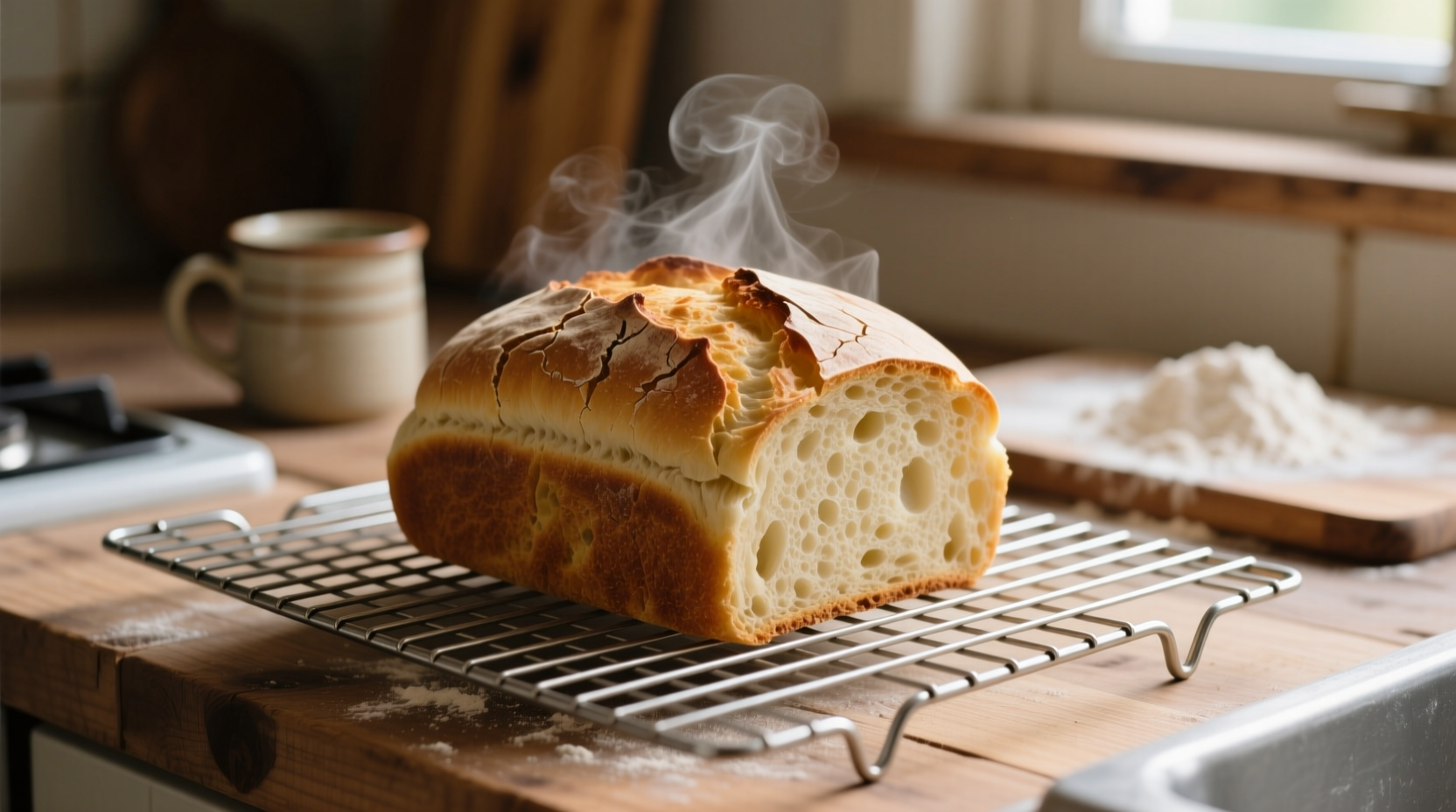Looking for bread that stays soft for days while offering a subtly sweet flavor? This potato bread recipe solves the common problem of dry, crumbly homemade bread by leveraging potato's natural starches. You'll get bakery-quality results with just 15 minutes of active preparation time and basic pantry ingredients.
Why Potato Makes Superior Bread
Potatoes transform ordinary bread into something extraordinary. The starches in potatoes absorb and retain moisture far better than flour alone, creating bread that stays soft for 5-7 days—nearly double the shelf life of traditional bread. Professional bakers have used this technique for generations, but our streamlined recipe makes it accessible for home cooks.
| Characteristic | Potato Bread | Regular White Bread |
|---|---|---|
| Moisture Retention | Excellent (stays soft 5-7 days) | Fair (stales in 2-3 days) |
| Texture | Delicate, tender crumb | Firmer texture |
| Flavor Profile | Subtly sweet, complex | Neutral |
| Best Uses | Sandwiches, toast, dinner rolls | General purpose |
Gathering Your Ingredients
Use these precise measurements for consistent results. All ingredients should be at room temperature unless specified:
- 1 cup (240ml) warm potato water (from boiling potatoes)
- 2 tablespoons instant mashed potato flakes (or 1/2 cup mashed potato)
- 3 cups (360g) bread flour
- 2 1/4 teaspoons active dry yeast
- 1/4 cup (50g) granulated sugar
- 1 large egg, room temperature
- 1/4 cup (60ml) whole milk, warmed
- 1/4 cup (57g) unsalted butter, melted
- 1 1/2 teaspoons salt

Step-by-Step Preparation
Preparing the Potato Base (5 minutes)
Boil 1 medium russet potato (about 8 ounces) in 2 cups water until fork-tender. Reserve 1 cup of the starchy potato water for your dough—this liquid gold contains natural enzymes that enhance texture and shelf life. Mash the potato until completely smooth with no lumps.
Mixing the Dough (10 minutes)
In your stand mixer bowl, combine warm potato water (110°F), mashed potato, sugar, and yeast. Let sit for 5-7 minutes until foamy. Add egg, milk, melted butter, and 2 cups of flour. Mix on low until combined. Add salt and remaining flour gradually until dough pulls away from the sides.
Kneading and First Rise (2 hours)
Knead for 5-7 minutes until smooth and elastic. Place in oiled bowl, cover with damp cloth, and let rise in warm spot until doubled (about 1.5-2 hours). Pro tip: For more complex flavor, refrigerate overnight for a slow fermentation—this develops better texture and taste.
Shaping and Baking (50 minutes)
Punch down dough and shape into loaf. Place in greased 9x5 inch pan. Cover and let rise until 1 inch above pan rim (45-60 minutes). Preheat oven to 375°F. Bake 35-40 minutes until internal temperature reaches 190°F. Brush top with melted butter immediately after baking for soft crust.
Troubleshooting Common Issues
Even experienced bakers encounter challenges with potato bread. Here's how to solve them:
- Dense texture: Usually caused by too much flour or under-proofing. Measure flour by weight (360g) rather than volume for accuracy.
- Crumbly bread: Potato content too high. Stick to the 1/2 cup mashed potato ratio in this recipe.
- Over-browning: Tent with foil after 25 minutes of baking.
- Dough not rising: Check yeast expiration and water temperature—too hot kills yeast, too cold won't activate it.
When Potato Bread Works Best (and When It Doesn't)
Understanding context boundaries helps you succeed with this recipe:
- Ideal for: Sandwich bread, dinner rolls, French toast, and any application where soft texture matters
- Not recommended for: Crusty artisan loaves or recipes requiring strong gluten development like baguettes
- Altitude adjustment: Above 3,000 feet, reduce yeast by 25% and increase liquid by 2-4 tablespoons
- Seasonal consideration: In humid climates, reduce liquid by 1-2 tablespoons to compensate for moisture in flour
Storing and Serving Suggestions
Wrap completely cooled bread in beeswax wrap or store in airtight container at room temperature for up to 7 days. For longer storage, slice and freeze in freezer bags for up to 3 months—toast slices directly from frozen for perfect results. Serve with honey butter for breakfast or use for premium grilled cheese sandwiches where the soft texture melts beautifully.











 浙公网安备
33010002000092号
浙公网安备
33010002000092号 浙B2-20120091-4
浙B2-20120091-4